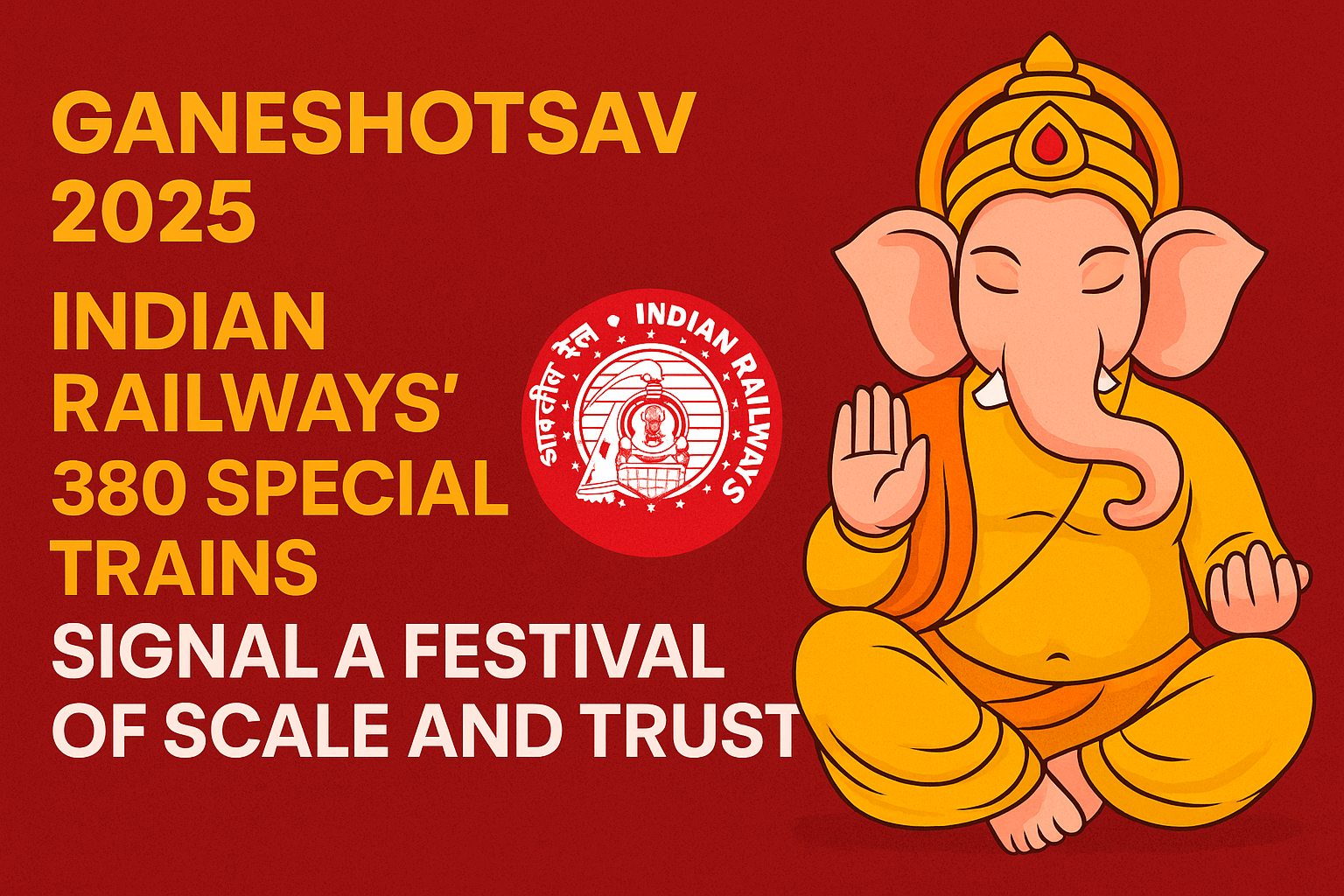
Ganeshotsav 2025: Indian Railways’ 380 Special Trains Signal A Festival of Scale and Trust
Every festival in India is not just a cultural moment, but also a test of the country’s infrastructure. Ganeshotsav, Maharashtra’s most awaited celebration, is more than rituals, colours, and songs—it is also about millions of families returning home to Konkan, finding a seat on a train, and experiencing the comfort of being with loved ones. Indian Railways’ announcement of 380 Ganpati Special trains for 2025—the highest ever—is not just a statistic, but a story of preparation, trust, and scale.
The Scale of Festive Logistics
To put this in perspective: in 2023, 305 Ganpati Special trips were run. In 2024, the number rose to 358. This year, the figure touches 380, setting a new benchmark for festival travel. Central Railway alone will operate 296 of these services, focusing heavily on Maharashtra and the Konkan belt, the heartland of Ganesh devotion. Western Railway will contribute 56 trips, Konkan Railway (KRCL) will run 6, and South Western Railway 22.
Behind these numbers is a simple truth: migration during festivals is not random chaos, it is a predictable pattern. Families head home, students return, and cities like Mumbai see an exodus towards smaller towns and villages. Indian Railways has translated this insight into action, turning data into empathy and planning into trust.
Stations as Stories
For the Konkan Railway, halts are not just stations but markers of memory: Kolad, Mangaon, Chiplun, Ratnagiri, Kudal, Sawantwadi, Thivim, Madgaon, Udupi. Each name evokes images of mango orchards, river ghats, fish markets, and ancestral homes where Ganesh idols will be welcomed with aarti and song. The trains linking these dots are more than carriages—they are bridges between urban work lives and rural roots.
A Festival That Tests Systems
Ganeshotsav 2025 will be celebrated from 27th August to 6th September. The railways have already begun services from 11th August, scaling up as the festival nears. This staggered approach shows a system that has learned from experience: managing surges is not about one grand gesture, but about phased responses that keep crowds moving, safely and smoothly.
In many ways, festivals are governance stress tests. They expose weak links in transport, policing, healthcare, and utilities. Indian Railways’ handling of Ganpati rush has become a case study in turning strain into strategy—by expanding capacity, introducing transparency through IRCTC and PRS systems, and balancing safety with speed.
More Than Trains, A Social Contract
A railway ticket during Ganeshotsav is not just a seat—it is reassurance that the system cares. For migrant workers, students, and middle-class families, affordable train travel is the thin line between participation and exclusion in India’s biggest cultural gatherings.
This is why these 380 trains matter. They are not just about numbers but about inclusion. They show how a 170-year-old institution like Indian Railways continues to adapt, learning that trust is built not by promises but by punctual trains and predictable schedules.
The Road Ahead
The detailed schedule is now available on the IRCTC website, the RailOne app, and at computerized PRS counters. But the bigger message is this: India’s festivals will keep growing, and so will the demand for mobility. The challenge is not just to add more trains, but to continuously innovate—better ticketing, smarter scheduling, and modern coaches that respect both time and dignity.
Ganeshotsav, after all, is not just a test of faith. It is a test of systems. And in 2025, Indian Railways seems determined to pass it with flying colours.




